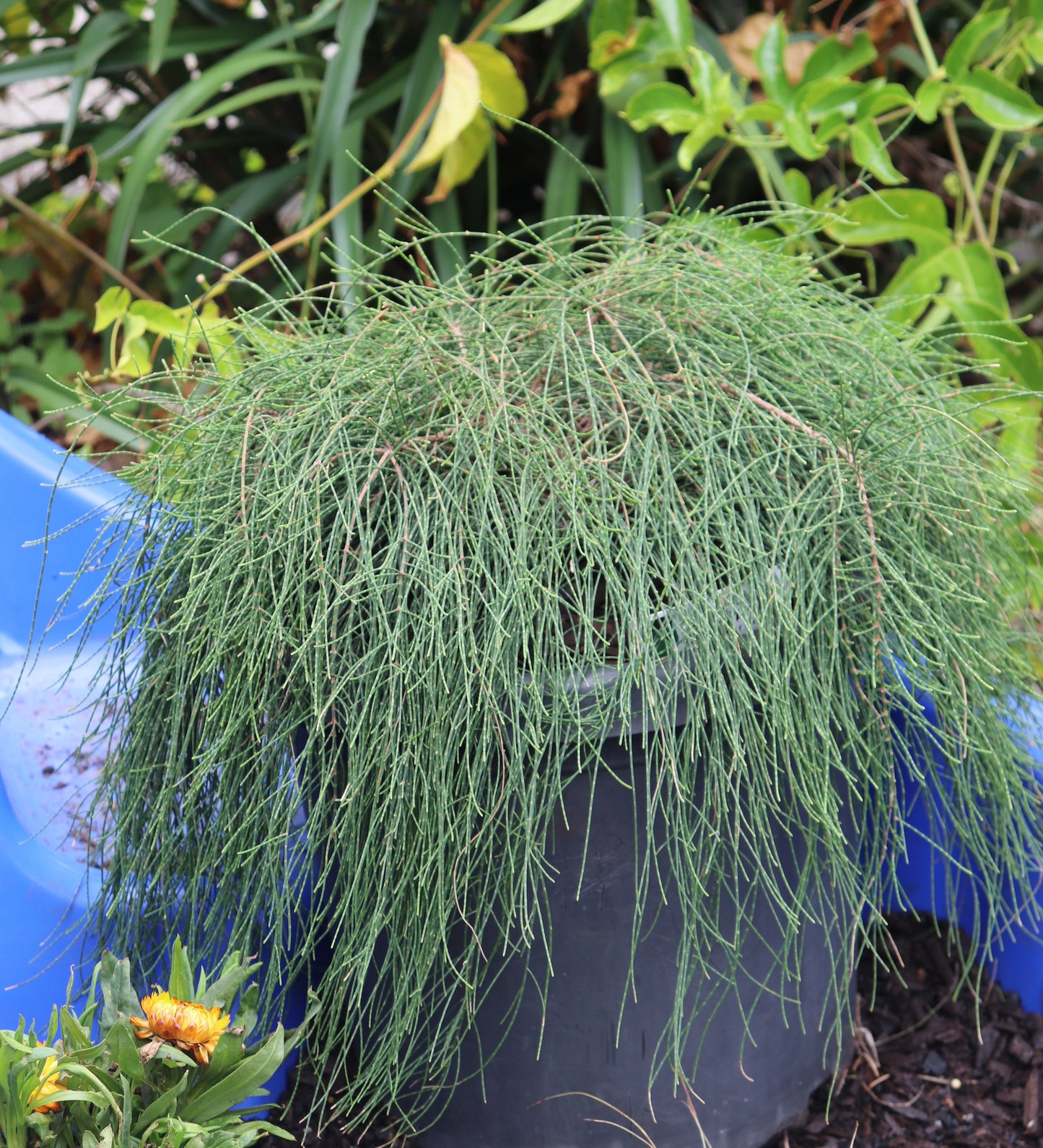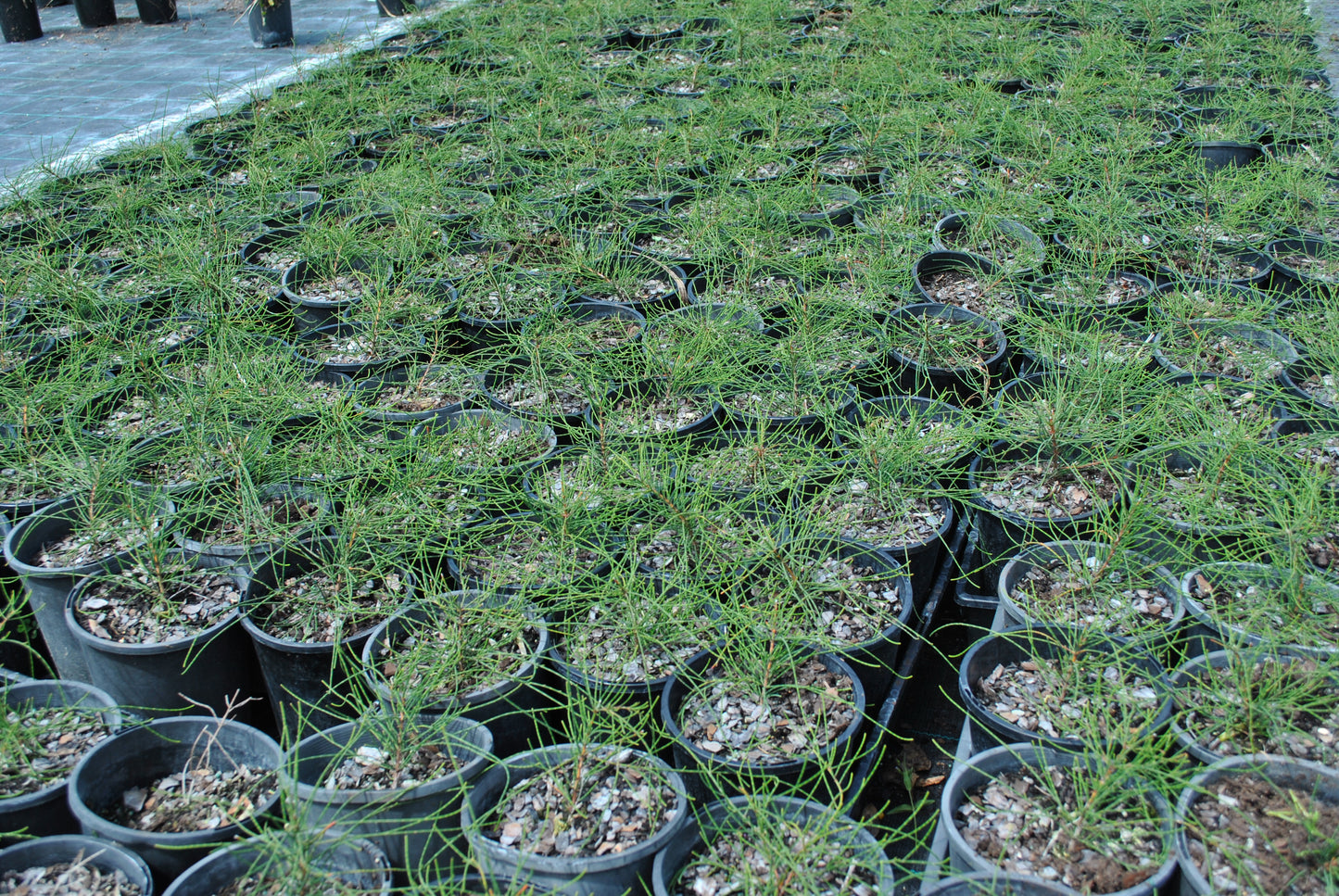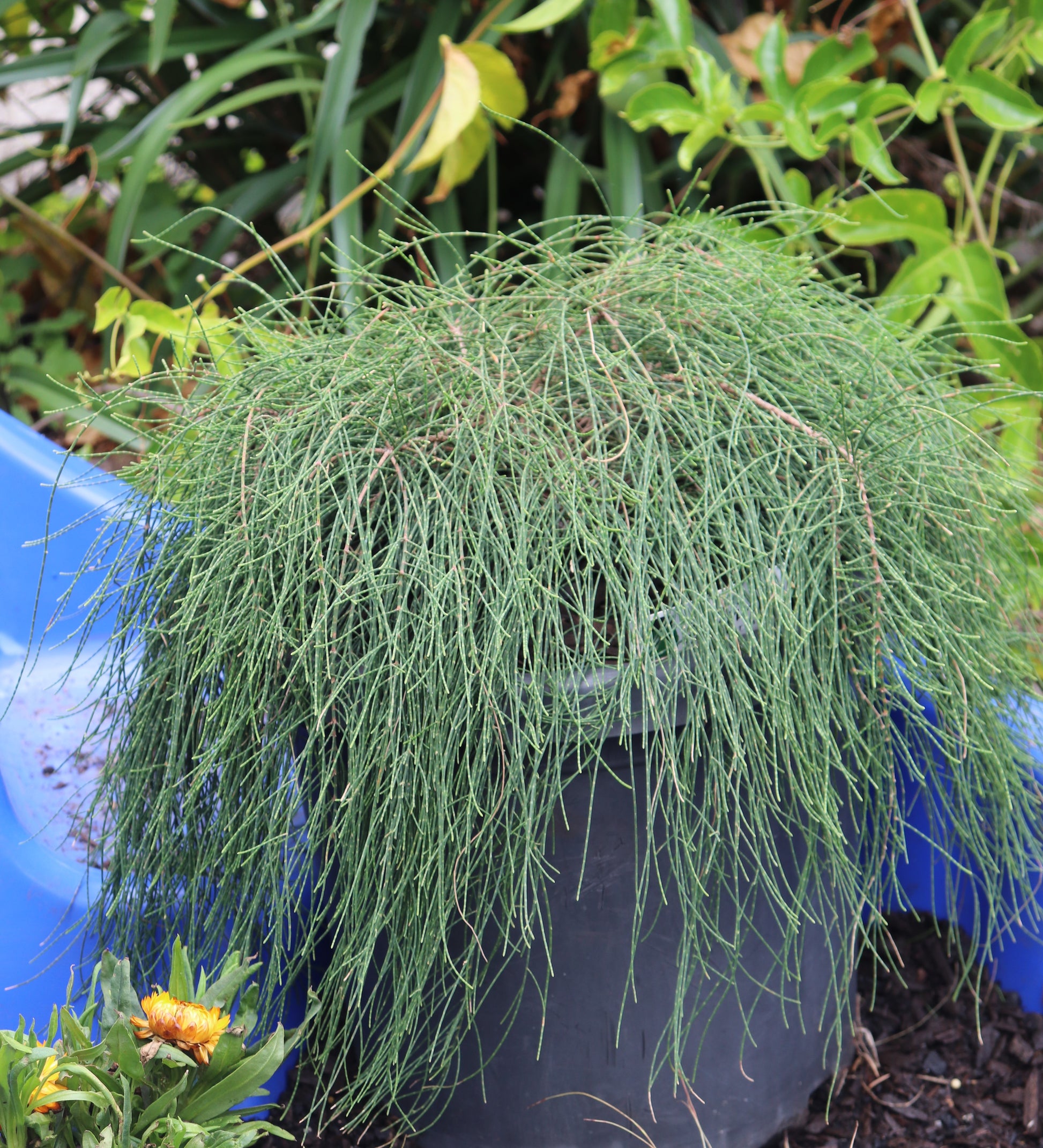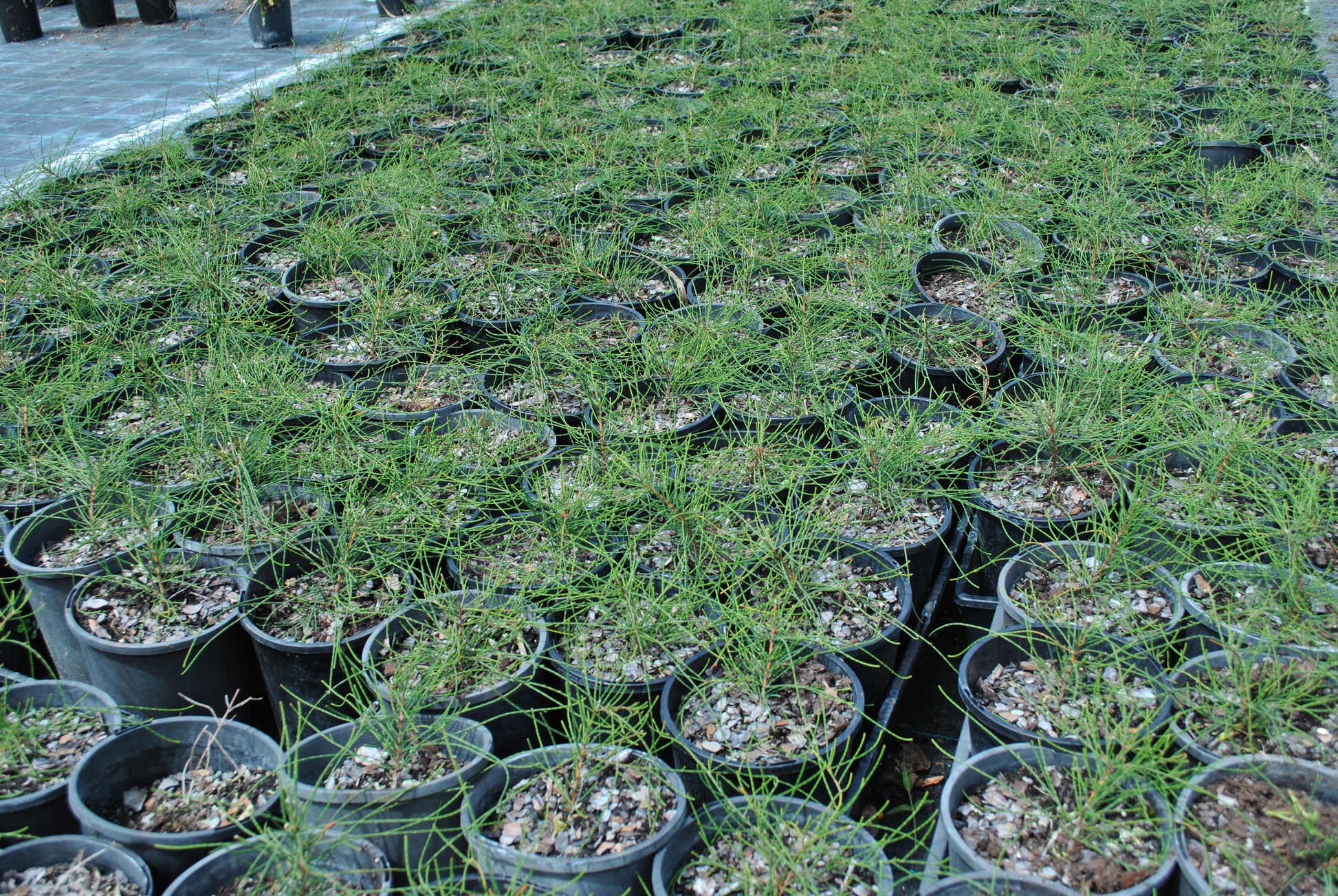Cousin It (Casuarina glauca prostrate)
Cousin It (Casuarina glauca prostrate)
Couldn't load pickup availability
$80 minimum spend required for checkout.
Why we love this plant!
Why we love this plant!
Casuarina ‘Cousin It’ is a dense, prostrate native groundcover with fine, cascading foliage that spreads to form a thick mat across the soil. Well-suited to South East Queensland’s climate, it handles heat, humidity, coastal winds, and drought once established. Its growth habit makes it a good option for erosion control on slopes, spilling over retaining walls, or suppressing weeds in open garden spaces. The dense cover provides habitat for insects and shelter for small ground-dwelling creatures, contributing to a healthy garden ecosystem. This hardy and low-maintenance variety is ideal for contemporary native landscapes or water-wise planting designs.
Care Considerations
Care Considerations
Watering preferences:
- Moderate watering; drought-tolerant once established. During warmer months, keep soil moist but not wet.
Mulching preferences:
- Applying organic mulch helps retain soil moisture and suppress weeds.
Fertilising preferences:
- A balanced fertiliser can be applied in spring to promote healthy growth.
Pruning preferences:
- A light prune can help maintain shape and control spread.
Good to Know:
- Provides habitat for small reptiles and invertebrates.
Plant Details
Plant Details
| Common uses: | Border planting, Erosion control, Drought hardy/tolerant, Low maintenance garden, Coastal garden, Rocky or dry gardens (Xeriscape), Robust/Hardy, Textural interest, Attractive foliage, Container growing, Courtyard garden, Feature plant, Wow! factor, and Soil improver |
| Expected Height Range: | 0.1 m - 0.3 m |
| Spread Range: | 1 m - 1.5 m |
| Preferred positioning: | Full sun, Partial sun, and Partial shade |
| Plant life cycle: | Perennial |
| Habitat: | A cultivated prostrate form of the native Australian tree Casuarina glauca, commonly known as swamp she-oak. This species is indigenous to the eastern coast of Australia, ranging from Yeppoon in central Queensland to Bermagui in southern New South Wales. It naturally occurs in coastal and estuarine environments, often found along riverbanks, floodplains, and brackish waterways. |
| Leaf information: | Dense, trailing, leafless green stems with a fine, hair-like appearance and soft, cascading habit |
| Preferred Soil: | Prefers well-drained soils and is highly adaptable to sandy, loamy, or clay soils, including poor or compacted sites. Tolerates dry to seasonally wet conditions. |
Share




